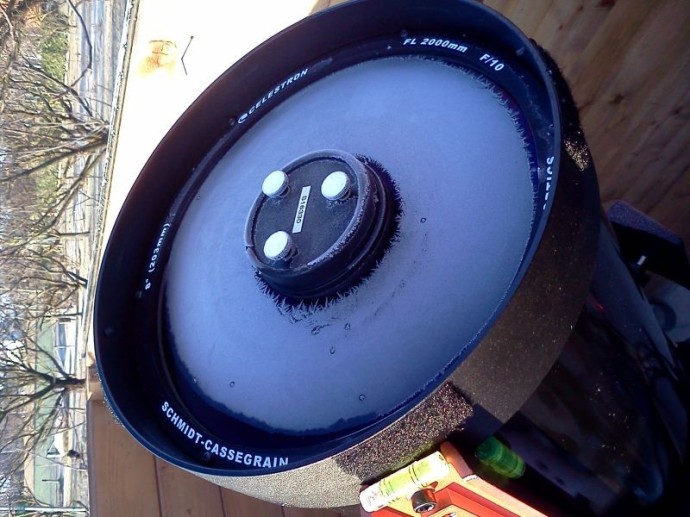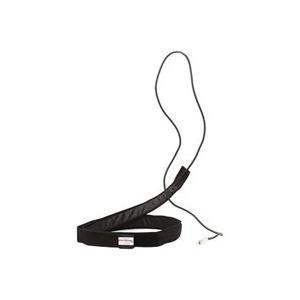CONDENSA E RIMEDI
Anno 2013
Fotografia non dell’autore
PREMESSA
I nemici dell’astrofilo sono tanti e tutti agguerriti.
Uno di questi si fa chiamare umidità ed è capace di contribuire in modo determinante alla mal riuscita di sessioni osservative e/o fotografiche.
Al di là dell’umidità presente nell’atmosfera e che, complici luci lontane anche provenienti da città invisibili, abbassa terribilmente il contrasto e la magnitudine raggiungibile, quella che solitamente infastidisce maggiormente gli astrofili (perché è la sola contro cui si può fare qualche cosa) è limitata all’appannamento delle ottiche e la condensa sulle parti meccaniche.
In un articolo di questa sezione ho trattato la situazione limite del DOPPIETTO ANNEGATO, ma anche senza giungere a limiti estremi è indubbio che un pur sottile velo di condensa sulle ottiche pregiudica in modo determinante le prestazioni del telescopio.
The enemies are many and all dell'astrofilo aggressive.
One of them calls himself moisture and is able to contribute significantly to the ill-success of observing sessions and / or photographs.
Beyond the moisture present in the atmosphere and complicit distant lights from cities also invisible, terribly lowers the contrast and the magnitude reached, the one that usually bothers most amateurs (because it is the only one against which you can do anything ) is limited to fogging of the optics and the condensation on the mechanical parts.
In an article in this section I discussed the situation of the doublet DROWNED limit, but without reaching the extreme limits there is no doubt that even a thin layer of condensation on the optics significantly affect the performance of the telescope.
IL PARALUCE: LA SOLUZIONE MIGLIORE
Il paraluce è, in assolto, il sistema migliore per scongiurare o quantomeno limitare il fenomeno. Più il paraluce è lungo e rigido e meglio è. Solitamente sarebbe bene dimensionare il paraluce in funzione dell’apertura del nostro obiettivo (lente, menisco o lastra correttrice che sia) in modo che sia lungo almeno il doppio del diametro utile del telescopio.
Se infatti è vero che, puntando allo zenith, poco si può fare, è altrettanto vero che, statisticamente parlando, le osservazioni o riprese esattamente allo zenith sono relativamente poche.
A parte tenere il tubo ottico verso il basso mentre non si osserva e usare il paraluce meglio dimensionato possibile (anche compatibilmente con le possibilità di bilanciamento del tubo ottico sulla montatura), tutti gli altri stratagemmi inventati sono generalmente controproducenti.
The shade, in acquitted, the best way to avoid or at least limit this. Over the hood is long and rigid and better. Usually it would be good to size the lens hood as a function of the opening of our objective (lens, meniscus corrector plate or whatever) so that it is along at least twice the diameter of the telescope helpful.
While it is true that, pointing to the zenith, little can be done, it is equally true that, statistically speaking, the comments or shoot exactly at the zenith are relatively few.
Aside from holding the optical tube down while you do not observe and use the lens hood can be better sized (also compatible with the possibility of balancing the optical tube on the frame), all the other tricks invented are generally counterproductive.
STRISCE ELETTRICHE? Mah...
Le “strisce elettriche”, come le chiamo io, lavorano su un principio che, di fondo, dovrebbe essere evitato. Il “Kendrick Dew Remover” utilizza infatti una resistenza elettrica che innalza di pochi gradi (2/3 al massimo) la temperatura dell’obiettivo (o della lastra correttrice) e ne evita o ritarda l’appannamento. Se pensiamo però alla fatica per portare in temperatura il tubo ottico ci rendiamo conto di quanto questo sistema sia contrario alla logica “dell’equilibrio termico”. Vero che i vantaggi offerti sono superiori agli handicap imposti, ma continuo a pensare che un paraluce fatto come si deve sia soluzione da preferirsi, a meno che non si stia semplicemente fotografando il cielo profondo con fattori di ingrandimento che non vengono inficiati dalla differenza di temperatura della lastra correttrice.
The "power strips" as I call them, they
work on the principle that, in the end, should be avoided. The "Kendrick Dew Remover" in fact uses an electrical resistance that rises a few degrees (2/3 maximum) temperature of the lens (or the
corrector plate) and prevents or retards fogging. If we think, however, the effort to bring the temperature in the optical tube, we realize how much this system is contrary to the logic of "thermal
equilibrium." True that the benefits outweigh the disabilities imposed, but I still think that a lens hood done as it should be preferred solution, unless you are simply photographing the deep sky
with magnification factors that are not affected by the temperature difference of the corrector plate.
PHON? TI PREGO, NO...
Se però le “strisce elettriche” possono essere tollerate, l’utilizzo del tradizionale “phon” è da escludersi a priori. L’elevata gettata d’aria e il suo calore (anche se posto al livello minimo - perché usare l’aria non trattata non fa che buttare altra umidità a maggior velocità sull’obiettivo) mandano in tilt in pochi secondi il precedente lavoro di acclimatamento durato ore. La condensa se ne va, verissimo, ma poi dobbiamo attendere che lo strumento torni a un equilibrio termico accettabile.
L’utilizzo del “phon” tende inoltre a “incollare” i granelli di polvere sull’obiettivo e renderne più complicata la loro asportazione l’indomani.
However, if the "power strips" can be tolerated, the use of the traditional "phon" is ruled out a priori. The high air and threw his heat (even if placed at the lowest level - why use untreated air does nothing but throw additional moisture at higher speeds on the lens) sent into a tailspin in just a few seconds earlier work of acclimatization lasted for hours. The condensation is gone, true, but then we have to wait until the instrument returns to an acceptable thermal equilibrium. The use of the "phon" also tends to "glue" the grains of dust on the lens and make it more complicated to remove them the next day.
CONCLUSIONI
In barba ad ogni ricercatezza tecnica, quando l’obiettivo del nostro strumento si appanna, abbiamo solamente due alternative: attendere, con lo strumento non esposto all’umidità, che la lastra frontale si pulisca da sola, oppure usare un panno o una carta morbida che assorba il grosso della condensa e poi un panno per pulizia delle ottiche per rimuovere il grosso del rimasto. Il tutto da farsi solo in casi di assoluta necessità e con massima delicatezza per non rovinare i trattamenti antiriflesso.
In the face of all refinement technique,
when the goal of our tool tarnish, we have only two choices: wait, with the instrument is not exposed to moisture, the front glass clean itself, or use a cloth or soft paper that absorbs the bulk of
the condensate and then a cloth for cleaning the optics to remove the bulk of the left. All this to be done only in cases of absolute necessity and with utmost delicacy not to ruin the antireflection
coating.




